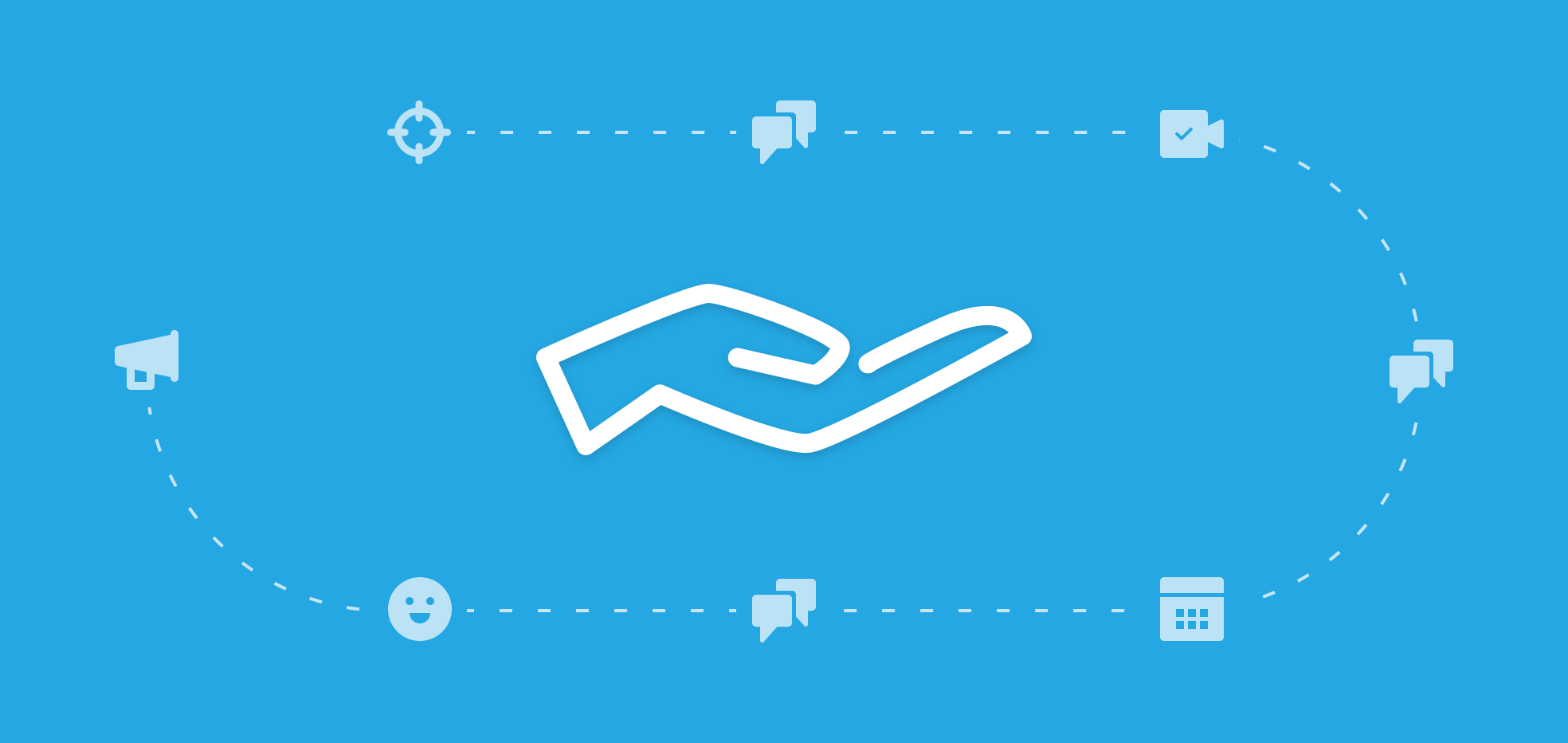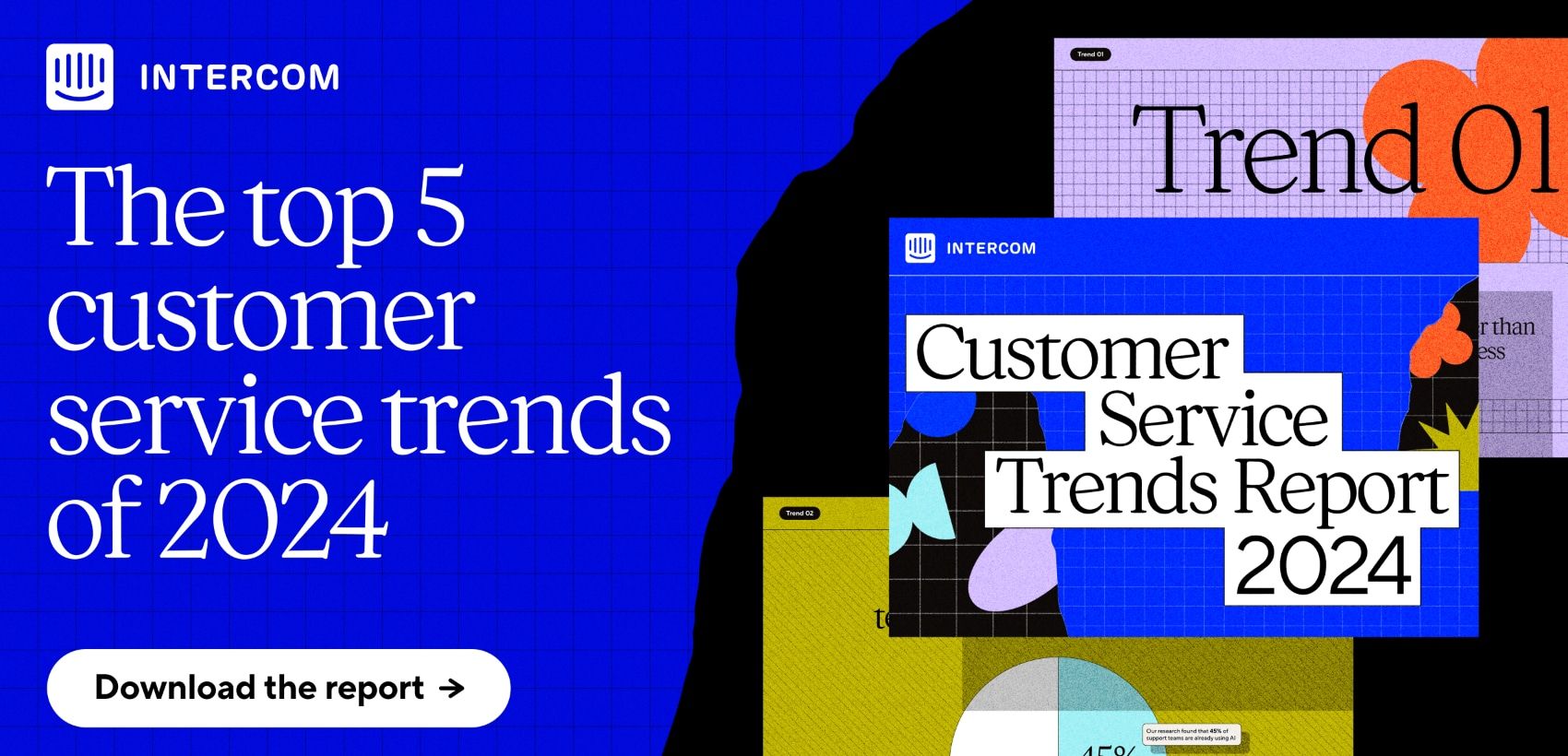
Why you should provide VIP customer support
Giving every customer an amazing support experience is a challenge. It’s especially true in the early days of a startup, when resources are limited and you’re fighting to get established.
Hard decisions about the levels of support customers can expect are unavoidable at this stage, particularly in SaaS, where customers are not locked into long-term contracts and can quit at any time. One prioritization option that can be extremely successful is a VIP customer support tier for key customers. This can be an explicit Service Level Agreement (SLA) on certain custom deals or price plans that charge a small monthly fee, or it can just be an internal emphasis on giving your most valuable customers a little white glove treatment to ensure they have a great experience.
At Intercom we went down the latter route – making sure customers who looked like they would be valuable or influential got a little extra help. I set up and ran the VIP support program for nearly two years. For the first six months of that time we didn’t have a sales team, much less global 24/7 customer support. In lieu of those tools, our VIP customer service helped ensure positive word of mouth among customers we believed were most likely to have influence.
Comparing the success of VIP companies to non-VIP identified apps is not entirely an apples to apples proposition – their likelihood to prosper makes them a VIP in the first place, right? But we ran the numbers on what impact VIP customer support has on customer churn. We confirmed it is significantly more likely to make customers become active users, convert those on trial to paying customers, and we retain them for a longer time.
Here’s how we made that happen.
Define the right VIPs

Before building out specific support tactics, we identified three distinct groups that would receive VIP support.
1. High value self-service customers
Customers who sign up to your highest value plans are self-selecting themselves as VIPs. They are spending a significant amount of money with you every month, and they are also likely to be investing significant time, resources, and energy embedding your product or service into their business. That heavy investment means they are much more likely to tell others about their good or bad experiences.
2. Big name signups
Depending on your product this could be everything from obvious brands everyone’s familiar with, to important bloggers or consumers with large social followings, to people connected with a company you admire.
Don’t be afraid to cast a wide net. For example, you receive a sign-up from a big enterprise company, who you believe won’t be able to use your desktop or mobile app because you’re too small or too early stage. Your new sign-up is a potentially valuable internal champion and still deserves to be treated extra well. When your team, product, and funding level are of a size that makes using your product more realistic for enterprise customers, these early big company signups will be invaluable for future growth.
3. Well-funded startups
If all goes to plan these will be everyone’s future VIPs, so start treating them that way now. It’s worth devoting some time (daily or weekly) to cross reference new customers against Crunchbase to see what funding they have. Most serious startups are not using Gmail or other generic addresses to sign up to your product, so don’t worry about those. When we started doing this at Intercom, we set the bar for this filter at a total investment of $500k or more.
Delivering a true VIP customer service experience
Now that you’ve defined your VIPs, how will you treat them? Some VIPs may be paying for extra attention as part of the SLA included in your premium plans. If that’s the case the SLAs should be clearly defined:
- What does the VIP support include?
- Who gets it (what plans or spend level)?
- How long will they receive VIP support?
- How many SLA levels can you effectively support?
- Can a customer buy in to an SLA?
Have all these FAQs answered beforehand and don’t offer what you can’t provide. Your VIP support can be a very simple process and still deliver a lot of value for the customer and be profitable for your company. Here are three tactics we’ve found effective.
1. VIP Welcome
A personal message to your VIPs welcoming them to your product and offering extra help is a solid starting point. As you scale you’ll only be able to do this for customers with the biggest potential but when you’re small consider doing it for all your VIPs.
Assuming it makes sense for your product you might consider offering a 1-on-1 demo in this message. For startups without a sales a team this can be a great proto-sales approach to converting more valuable customers. Frequently the person who takes you up on the offer will invite others from their company. The demo then becomes a chance for you to help them convince the rest of their team that your product will help solve their problem.
2. VIP Concierge Onboarding
Concierge or “white glove” onboarding can help ensure as many VIPs as possible convert from free trial to paid plan. To successfully implement it, you first need to answer a few key questions:
- What do users need to achieve, so that they get value out of using your service? For example, if you are building a project management tool, you’ll want to be sure your new users are starting their first project, creating tasks, and adding collaborators.
- What actions must your users take regularly to keep them engaged and retained? These are the actions that help your users continue to get value from your product month after month. e.g. Are they completing projects and beginning new ones? Are they using your super powerful reporting tool? Are multiple collaborators assigned tasks and completing them?
- At what point in your users’ lifecycle does onboarding need to be completed for your customer to be fully engaged and seeing enough value to convert and retain them? In SaaS, this is typically within the first 30 days (i.e. the subscription renewal). But in reality that’s the far end. You want new users successfully onboarded and realizing value during the free trial, and even better, within hours or days of signing up.
Uncovering the answers to these questions involves experimentation and will take time, but getting it right will inform how much outreach is needed, and when.
After sending the VIP welcome message, set up a schedule of manual check-ins at key intervals in the trial period to ensure the user is making the expected progress. If all looks good you might just say something like “Things look like they’re going well, but let me know if you have any questions or concerns at this point.” If they don’t take you up on the initial offer of a demo, you can always close with, “The offer for a demo still stands if you’re interested.”
If it’s clear during your check-ins that feature activation is behind schedule or activity levels are low, send them a personal message. Reach out and address a key feature you see they are ignoring or not using effectively. Offer some tips, emphasize the value of the feature, and let them know you’re happy to go into more detail if they have other questions. Again, don’t forget the offer to show them how to get the most out of your product in a quick demo.
3. VIP Lifecycle Support
While a great product is the most crucial element of customer retention, the personal touch of manual check-ins throughout a customer’s lifecycle also has an impact. Make sure you consider resources: if you’re a United States-based company then your capacity to offer 24/7 support to global clients regardless of local time may be limited. Set up a regular task to manually check on your VIP customers’ product usage and activity. The first 30 days after conversion are still critical. You can go to quarterly check-ins after that. The goal of these check-ins is to identify and head off “activity churn,” a leading indicator of account churn. If your VIPs are not using your product, it won’t be long before they realize this and stop paying for it. By the time an account churns it’s too late. At best you might get some feedback about why they churned.

Remember the key is activity at the account rather than the user level. It’s acceptable for one user from a team to disappear temporarily; it’s when the activity of an entire team is dropping that you need to worry. Churn won’t go away if you ignore it.
When you do identify activity churn, how you approach it matters. Fear of making a customer aware they are paying for a product they no longer use is not a reason to stay silent. Instead, reach out in a personal, meaningful way and try to find out what’s wrong and how you might be able to fix it. The end result is greater long-term revenue retention.
Stay personal at scale
VIP onboarding and lifecycle support doesn’t scale infinitely. Beyond a certain scale you won’t be able to provide this kind of manual, concierge experience to every customer unless you hire a team focused on this alone. So using personalized, but automated messages for everyone is a great idea.
There’s a clear connection between customers who got the best opportunity to “see the value of free” during their trial and those who convert and are retained as paying customers for a long time. This holds true for all customers, not just VIP. But when you add in the difficulties of scale, a VIP support program is an effective way to ensure your limited resources are focused on customers with the highest value potential first.








